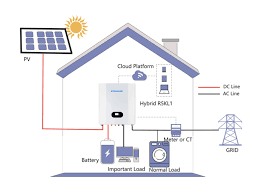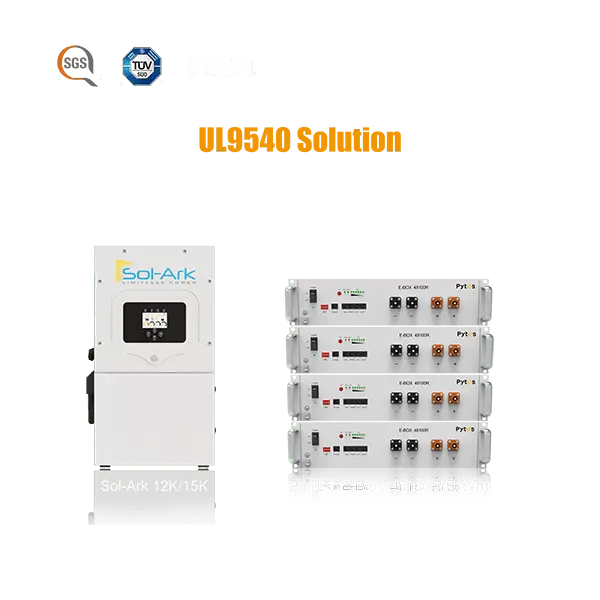How to Build A Home Battery Backup System In 2024
As solar panels become more popular, many have excess energy output. As a result, more homes are now equipped with home battery backup systems for solar systems rather than wasting that power. This backup system allows the batteries to store any remaining power generated by the solar panels during off-peak hours. Stored electricity can provide a backup or safety net in times of high demand or power outages as it provides a stable supply of electricity.
Why Do You Need to Build A Home Battery Backup System?
Due to extreme climate change, many disasters can occur now, most of the time resulting in power outages. Aging infrastructure and more severe disasters spell trouble, so you must be prepared for power outages. Having a home battery backup system is ideal for the following reasons:
1. Stable power supply. Having a home battery backup system in place means power can be provided even during difficult times caused by disasters and aging infrastructure. The power stored in the battery can be used to keep lights, internet, refrigerators, gadgets and more on.
2. Reduce electricity bills. Backup batteries are also available during high demand seasons such as summer. Using it, the electricity needed to run appliances can be divided between the grid, batteries and solar panels. This means less power consumption from the grid, resulting in lower energy bills.
3. Reduce grid dependence. Since batteries and solar panels can partially meet the power requirements, dependence on the grid will be reduced, thereby increasing the penetration of clean energy.
4. Home value increases. Installing a home battery backup system can increase the value of your property (due to its green background), making it more attractive to potential buyers if you decide to sell in the future.

What Do You Need to Set Up A Home Backup Battery System?
1.Assess your power needs
To build an efficient home battery backup system, start by assessing your energy needs. Consider your average daily energy consumption and the duration you would like your backup system to provide power during outages. This information will help you determine the capacity and size of the battery system required to meet your specific needs.
2.Choose the right batteries
The year 2024 brings advancements in battery technology, offering more efficient and sustainable options for home battery backup systems. Lithium-ion batteries continue to be a popular choice due to their high energy density, longer lifespan, and minimal maintenance requirements.
3.Opt for Smart Features
In 2024, home battery backup systems are becoming smarter and more connected. Look for systems that offer smart features such as advanced monitoring and control capabilities. These features allow you to remotely monitor the status of your battery system, track energy usage, and even optimize energy storage based on time-of-use rates. Smart battery systems can integrate with home automation systems, enabling seamless integration with other smart devices in your home.
4.Consider Solar Integration
Solar integration plays a crucial role in building a sustainable home battery backup system in 2024. By combining your battery system with solar panels, you can harness renewable energy to power your home and recharge your batteries. This not only reduces your reliance on the grid but also maximizes the use of clean energy. Look for battery systems that are compatible with solar integration and consider installing solar panels to make your backup system even more sustainable.
Please refer to Pytes E-Box-48100R for the above points. E-Box-48100R is an advanced solar battery storage system that can provide you with safer and more efficient energy storage. Compatible with all mainstream inverters on the market; it has a wide range of applications, including off-grid, backup, zero output, time sharing, demand response, peak shaving, virtual power station, etc. Moreover, the E-Box-48100R is compact and easy to install, making it a wise choice for your battery replacement, expansion or new installation.
5.Select an Inverter with Advanced Features
By 2024, inverters will be equipped with advanced features to increase the efficiency and functionality of home battery backup systems. Look for an inverter with grid-forming capabilities, allowing the system to operate independently of the grid during power outages. Grid tie inverters ensure a seamless transition between grid power and battery power, providing uninterrupted power to your home. Also, choose an inverter with high power capacity to meet the peak demand of your home.
6.Ensure proper installation and safety measures
Proper installation and safety measures are crucial when building a home battery backup system. Specific installation guidelines and regulations may apply. You are welcome to consult Pytes, our team has professionals or certified installers who understand the latest standards and best practices. They can ensure your battery system is installed safely and efficiently while complying with local electrical codes.

Conclusion
In conclusion, home battery backup systems provide an effective solution for uninterrupted power supply during power outages. Think carefully about your energy needs beforehand. Choose the right battery. Evaluate charging methods to ensure safety compliance and implement appropriate monitoring and maintenance for optimal reliability.
Pytes (USA) ENERGY, INC, Since 2004, we have committed to be at the forefront of residential energy storage solutions. Our E-BOX-48100R for solar battery storage systems is one of our products dedicated to helping homeowners achieve energy independence and save energy.
You are welcome to browse our website or contact us to learn how we can provide you with efficient and reliable home backup battery system design solutions and provide you with professional installation guidance.
Website:www.pytesusa.com
Email:pytesusa@pytesgroup.com
- Art
- Causes
- Crafts
- Dance
- Drinks
- Film
- Fitness
- Food
- Games
- Gardening
- Health
- Home
- Literature
- Music
- Networking
- Other
- Party
- Religion
- Shopping
- Sports
- Theater
- Wellness


